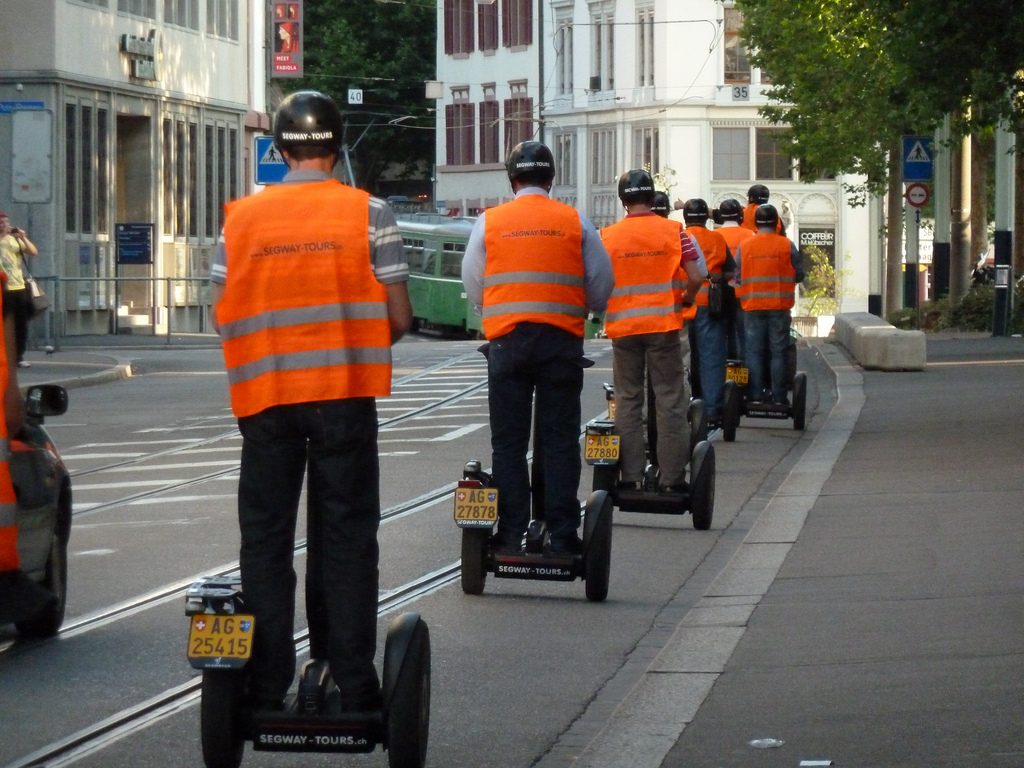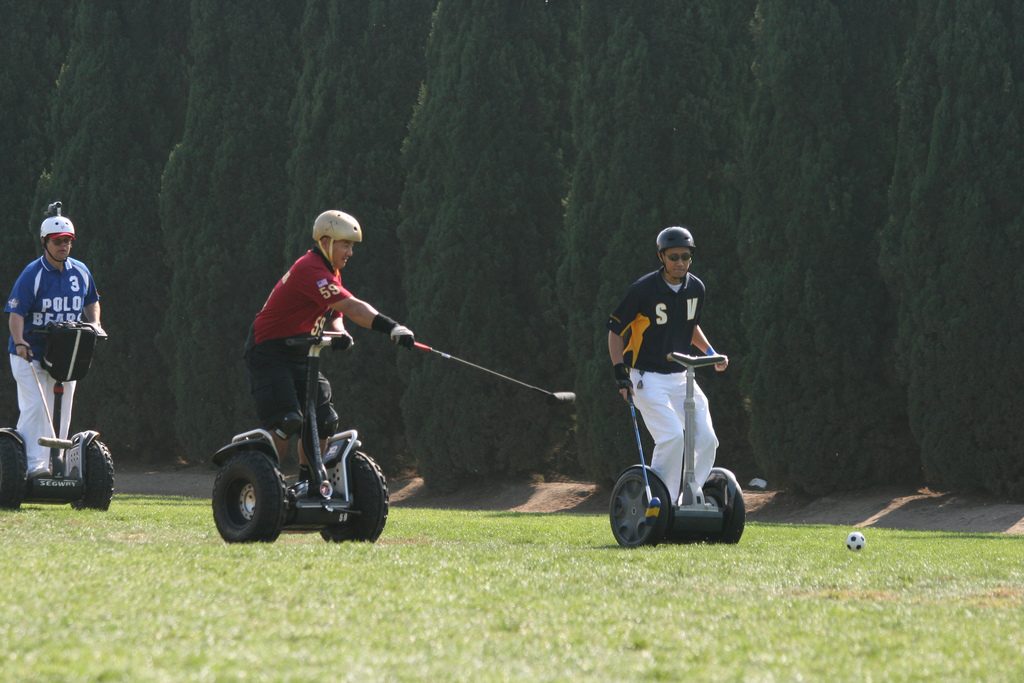Often only a few years separate the tinfoil hats from the millionaires to be. I was writing the piece on the Youbionic arm and thinking of how we will use 3D printing to augment human beings. Clearly augmenting the human body with mechatronics would be a good idea. The flesh is weak but stepper motors are strong! Oh how we will eeck, ooow, brrrr whine in our old stepper augmented age. Machines could very well fill the gaps once our bodies start failing us. But, will old people homes really be filled with Borg grandmas?

Will your grandad get that night vision upgrade he’s always wanted so he can deer hunt whenever he damn pleases? Would it be a good idea if I on a whim replaced my tennis elbow with a tennis racket? We never get the future right and most of our visions of mechatronic augmentations of humans are either a bit Johhny Cab or they’re ruined by that tiara Geordi was wearing across his face in Star Trek. I know he can’t see it, but someone should have told him really.
There’s also a real disconnect between medical devices and assistive devices which all look boring beige and suffer from true neglect by the design world and the aesthetics of augmented people in sci-fi. In science fiction every time someone has an assistive device or augmentation, it is fifty shades of hearing aid. Eye patches and spines from people who presumably also make SM gear. Meanwhile back on Now Earth, assistive devices look like something designed by the Romanian secret service in the 80’s if Ceausescu mandated that everything that was made were computer case beige or grey. Oh, he’s had a car accident? Well let’s make everything in his world grey, that will help.
Partial augmentation of humans through mechanical devices, chips or part replacement is going to occur. We find ourselves to be too valuable to die sometimes and it will only take one very wealthy person to bring about the beginnings of an industry to halfling us with robots. A lot of this is technically doable and I for one salute Mr. Zuckerberg and hope that his 360th year on earth will be even more fun than the previous 359, even though he’s mainly a brain floating in a fish tank on top of a Segway. May I point out to Zuckertank that he still has not mastered Hungarian and that his Go game is as weak as his handshake and his apologies.

Remember Segways? Remember how that was supposed to be bigger than the internet? Some thought it would fail. No one predicted that it would be a thing for some tourists to do in some cities sometimes in groups as if it were an urban alternative to paintball. If Salsa dancing is what couples do to spice up doomed relationships, then Segway tours are what couples do if they’ve resigned themselves to mediocre existences together. We’re not in love per se, but its comfortable and rent here is expensive. Those few happy moments on vacation are spent bobbleheading on the inverse opposite of a treadmill (which they also do, but at another time of day, indoors).

Segway Polo, 2008
Even though we will be augmented through machines, we will not really know to what extent or how exactly. Am I going to get my eye replaced by a biological thing or a CMOS/Structured light sensor of some kind? Will we pluck cloned eyeballs from pigs in fields who are trained to never sleep? Or will I get some eyepatch that looks like I should be an unknown Avenger lasering watermelons at the supermarket or will I just wear better glasses? Will the grandmas of the future get selfie drones to encircle them warding off danger? Or will teeny airbags mounted on our socks protect us from falling? Or will we have four arms? I don’t know.
I for one would have never have expected a company that makes headphones and sells you other people’s apps to be working on self-driving cars. From the people that brought you: Words With Friends, Candy Crush, Angry Birds, and the Fart app: self-driving automobiles. I can’t wait for someone to come up with a game that lets one person somewhere “in-game” drive a car, namely your car, while you drive theirs. Apple logic is clear: the more we can coop up the human in a vegetative state the more apps that we can sell them. I don’t have to point you to the best Wachowski film to let you know what the logical endpoint is for Apple. OK, it’s the Matrix, but this time you pay to be in it, there’s a TOS and in-game purchases. It’s like the matrix but everyone gets to have a nice hat. “I knew I’d end up in the Matrix, I just didn’t expect this much BASE.” “300 citizens of New York died today when a firmware update didn’t go as planned”, “more in-game riots expected as Farmville defibrillators triple in cost”

There is a convergence coming between IoT, nanoprinting, 3D printing, bioprinting and the data that flies all around us. Small sensors will populate our world and connect to networks that will make sense of and optimize all of the things that we need that move and all of the things that stand still and are important to us. Barcodes for all the things but these barcodes tell us what this thing is as an individual thing, where it is, what it has experienced and who has it. Pretty nifty from a preventive maintenance and logistics point of view. But the same sensor technologies and nanoefforts will lead to nanomedical procedures and nanoscale medical devices. If we’re smart we’ll capture that all under the 3D printing flag and that way we’ll all get better watches. By presenting 3D printing as a gateway technology to any new technological developments we can permanently own the future. If Mary invents a new material on Thursday, we should print it on Friday. OK, maybe Monday but only if you’ve got a lot of stuff going on. We can be the magic that unlocks the future of producing all the new things. We just have to melt, burn, stick, mash it together somehow and this will cement our collective future.
This nanoconvergence will however also make people afraid. What has changed recently is that many of the muggles now see us in a more suspicious light already. We are no longer the source of all the repaired pets. We are digital gunsmiths every one. By the way I can’t be the only one annoyed at the fact that they can’t seem to find 3D Printing experts? There’s one at nearly every university. Yet, they turn to the gun experts almost every time. It’s as if the story was about skydiving naked and the channel would ask a naturist over a skydiving instructor. Or if the story was about how to grill the best steak, the TV channel would probably invite the steak.
Amidst our most trying public scrutiny people and machines are converging. A nanotech world, a printable world and the human experience are set to…oh I don’t know like mix, mulch, blend? Emulsify like bernaise? Somehow come together. At this point we will be the backdrop for so much that we will become boring, commonplace and unloved. We will only get blamed for things. Further controversy at this point may make our movement erode still in popularity. This as we become very critical to everyone’s lives in medicine, aviation and industry. We don’t want to be like the utilities or other companies where we only are in the news if we falter.
To avoid this I suggest a few things:
How to Un-3D Print a Crisis
1. Every time something bad happens in 3D printing we refer to it as Printcrime.
“Yes this is another printcrime incident that we regret.”
“It is not our job to combat printcrime.”
“Printcrime is due to societal factors such as poverty, lack of education, things beyond our control”
“Printcrime just comes with the territory.”
“Printcrime is a small price to pay for technological progress”
“Its just a small printcrime incident, nothing to worry about”
Once the term printcrime for anything bad has been established a significant portion of the public will probably think that it has something to do with 2D printers or newspapers. This is already a significant win, we don’t have to convince everyone we’re not a problem just a particularly vociferous easily distracted contingent.
Printcrime is something that our valiant legislators are dealing with.
2. Then we start saying, “Hackers.”
“Regrettably we seem to have been the victims of print crime committed by hackers.”
“We do all we can to combat print crime but hackers have this time..”
“Hackers have done this evil deed I can do nothing but monotonically recite a platitude ridden contrite apology written by our PR department. I will also momentarily look chastised. Oh sorry did I read that last part aloud?”
Once the term hackers has replaced printcrime our problems can be lumped in with all the other things hackers do.
3. Then we will tell the media about hackerspaces.
Once this has been established we will tell the media about this thing called hackerspaces where hackers gather. They will, with some trepidation, go to those places and who will they find there? Very friendly wouldn’t harm a fly people. And who else? The best damn PR folks we have of course, trying desperately not to burn themselves with their first soldering iron.
OK guys, deal? So the coming decades will get much rougher than this we’ll 3D print someone’s baby upside down, someone will do something inevitably asinine, people will get hurt and criminals will misappropriate our technology. When this happens we will refer to this as printcrime? OK? We have a technology that anyone can use to make anything. We should also probably then be grown up enough to realize that we need solid crisis communication and that evil things will happen.
Images Creative Commons Attribution Charlie Cowins, Frankula, Patrick Tschudin, Braden Kowitz.
Subscribe to Our Email Newsletter
Stay up-to-date on all the latest news from the 3D printing industry and receive information and offers from third party vendors.
You May Also Like
Profiling a Construction 3D Printing Pioneer: US Army Corps of Engineers’ Megan Kreiger
The world of construction 3D printing is still so new that the true experts can probably be counted on two hands. Among them is Megan Kreiger, Portfolio Manager of Additive...
US Army Corps of Engineers Taps Lincoln Electric & Eaton for Largest 3D Printed US Civil Works Part
The Soo Locks sit on the US-Canadian border, enabling maritime travel between Lake Superior and Lake Huron, from which ships can reach the rest of the Great Lakes. Crafts carrying...
Construction 3D Printing CEO Reflects on Being Female in Construction
Natalie Wadley, CEO of ChangeMaker3D, could hear the words of her daughter sitting next to her resounding in her head. “Mum, MUM, you’ve won!” Wadley had just won the prestigious...
1Print to Commercialize 3D Printed Coastal Resilience Solutions
1Print, a company that specializes in deploying additive construction (AC) for infrastructure projects, has entered an agreement with the University of Miami (UM) to accelerate commercialization of the SEAHIVE shoreline...





























